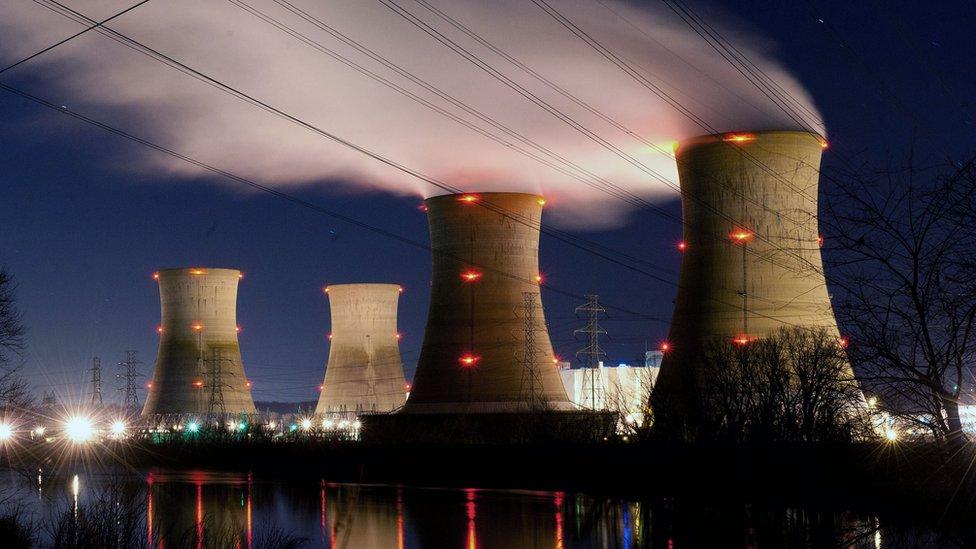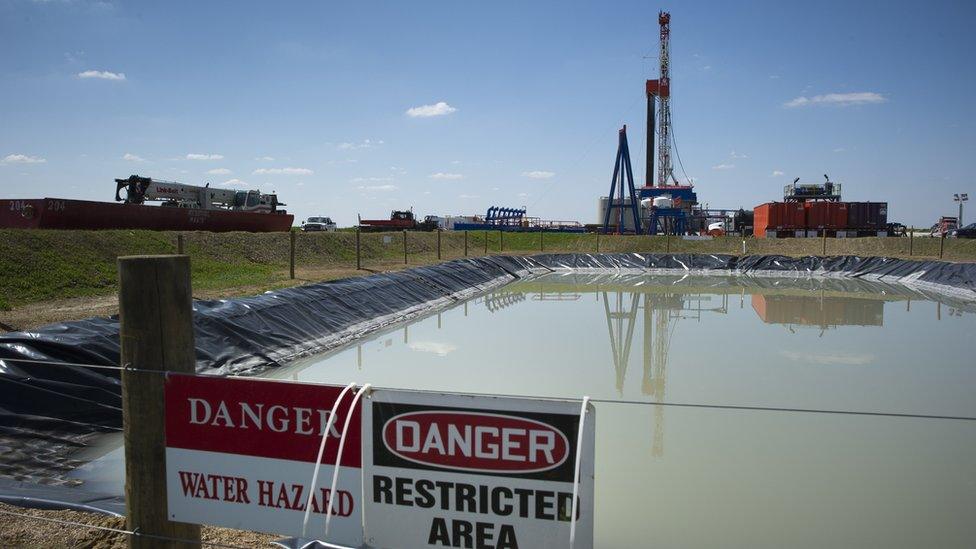Fragile future for US nuclear power
- Published

The Three Mile Island nuclear installation is set to close 40 years after a partial meltdown
No one died, there were no direct health impacts, but the Three Mile Island (TMI) nuclear accident burned so deeply into the US psyche that it has helped limit the future use of the power source across America.
A major factor in turning the accident into a "disaster" was timing. Just 12 days before the 1979 accident that saw a partial core meltdown at one of the two reactors at the Pennsylvania plant, The China Syndrome was released in cinemas across the US.
The film's plot centred on a major safety issue at a California nuclear plant. It was a spooky backdrop to the worst real world nuclear accident in US history.
While citizens were frightened by TMI, so too were investors. The accident happened after just three months of commercial operation causing the plant owner to go bankrupt. The whole clean up effort took 14 years and cost almost $1bn.
In the wake of TMI, demand for nukes fell through the floor. The Watts Bar plant in Tennessee, the first new nuclear installation in the US, became operational in 2016, two decades after the previous one.
Many US scientists, greatly concerned by the threat of climate change, have come out in support of nuclear, arguing that the need for large-scale low-carbon energy outweighs concerns over safety.
Just after the Paris climate agreement was signed in 2015, four prominent researchers wrote a public letter, external urging the rapid uptake of new nuclear.
"Nuclear will make the difference between the world missing crucial climate targets or achieving them," wrote the group, which included Nasa scientist James Hansen.

The rise of fracking for natural gas in Pennsylvania and elsewhere has hurt the coal and nuclear industries
"The future of our planet and our descendants depends on basing decisions on facts, and letting go of long-held biases when it comes to nuclear power."
A big problem for Three Mile Island, though, was the fact that the state of Pennsylvania doesn't regard nuclear energy as a renewable resource.
Some analysts believe that unless nuclear installations are treated as green sources, their days are numbered.
"The Three Mile Island announcement represents the clear need for rational carbon pricing in US power markets or we'll continue to see nuclear's role continue to fade going forward," said John Larsen, an expert on the US power sector at the Rhodium Group, external.
"With no sign of that happening at the federal level, the question is being left to the states."
Six nuclear plants have closed around the US in the past five years. Another five are likely to go in the next few.
But even if the nuclear operators could benefit from the public purse in the way that renewables like wind and solar already do, the real killer for atomic energy has been natural gas.
Hydraulic fracturing has seen US production of gas rise by over 40% in the decade to 2016.
It's plentiful, cheap and flexible. Operators can turn production on or off rapidly in response to demands. And as well as puncturing nuclear's bubble, the rise of gas has also helped put coal on the floor.
Between 2006 and 2016 coal production fell by a third. By 2015 the amount of electricity being produced from gas edged ahead of coal for the first time.
So can President Trump's promises to remove regulations and limit environmental precautions boost coal back to the top of the heap?
Not really, say some experts. Old-fashioned coal and nuclear don't work well with the newest kids on the energy block, solar and wind.
"Nuclear plants are very hard to ramp up or ramp down. So are most coal-fired plants," said Prof Jeremy Weber from the University of Pittsburgh.
"They don't complement the intermittent nature of renewables as well as natural gas. And they are more expensive. It's really a left as well as a right punch."
Coal will continue to play a major part in the US energy mix for many years to come, and some believe that President Trump's push in favour may result in a boost in production. However, the long term future of the US coal and nuclear industries is not looking good.
"The President's reforms may be able to move the dial on the margin for coal, but massive displacement has already occurred and the majority of that isn't going to come back with a rolling back of regulations," said Prof Weber.
He went on: "Natural gas and renewables will eat away at coal and nuclear over time. No one is even fathoming such an expensive risky investment as a nuclear power plant outside of highly regulated markets.
"I don't see anything reversing that trend."
Follow Matt on Twitter, external and on Facebook, external.